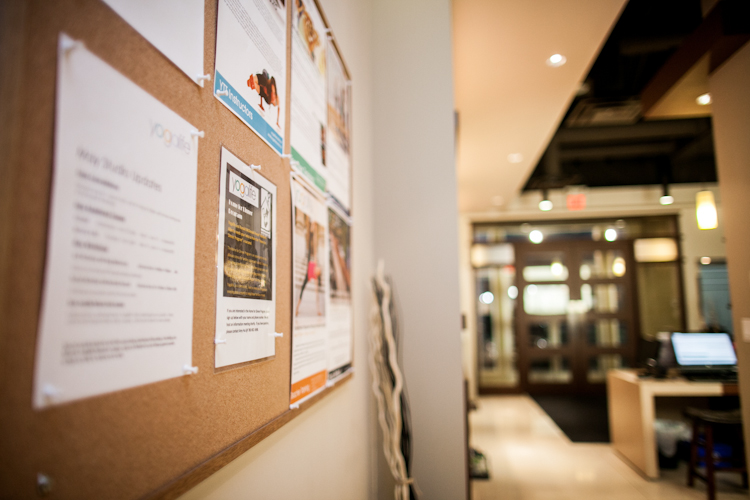Our Latest Offerings For Yogi Mamas
Check out the latest pre and post-natal registered classes coming up at Yogalife Studios South with Dawn McCorry!
Dawn is Certified Prenatal/Postnatal Yoga Instructor as well as Certified Birth Doula through DONA. She has also had the honour of carrying and bringing into this world 3 amazing sons. Dawn’s open approach to yoga encourages students to be guided by their own inner wisdom. She can’t wait to share all the benefits yoga has to offer to new parents.
The morning sickness, achy lower back, and fatigue of pregnancy have passed. But for new mamas, a whole other different set of physical conditions often accompanies the bliss of loving your little creation. Luckily, yoga can help address the most common concerns after having your little one. And moms aren't the only ones who can benefit from yoga; a few basic moves for the wee one can make your infant more comfortable and calm.
Mom and Baby Six Weeks Pre-Registered with Dawn McCorry Yogalife Studios South || September 15-October 20, 11:00-12:00
Prenatal yoga is designed to prepare expectant mothers for labour, and focuses on increasing flexibility, strength, circulation and balance, to help support both mom and baby during this time. Through the six weeks, you will be guided through meditations, pranayama (breath exercises), and postures to help adapt to the changes happening in your body through each trimester, and to connect deeper with the self, and the life growing within.
Prenatal 6 weeks Pre-Registered with Dawn McCorry Yogalife Studios South || September 15-October 20, 12:15-1:15
Kari Edwards at MindBodyGreen offers these tips for new yogi mamas:
1. Focus on breathing.
In the first few weeks after birth your body needs time to recover so the best thing you can do is put your asana practice aside and focus on pranayama and meditation. When you're feeding your baby or in need of a boost after a long sleepless night, practice breathing deep into your belly long and slow through your nose.
Close your eyes and focus on the feeling of the breath as it moves in and out of your body. Even if you only manage one deep breath, your body and mind will thank you. Do this as often as you need throughout the day and it will help focus and calm your mind and enjoy these special early moments.
2. Ease into your practice with forward bends.
Provided you are recovering well and had a normal birth, beginning to include a few forward bends around two weeks or so post birth can help to compress your belly and aid in returning your uterus to its pre-pregnancy position. Check with your midwife if it's OK before you begin.
Sit with your legs together straight out in front of you. (You can lie your baby on your legs or beside you if you wish.) Bend forward from the hips, remembering not to push yourself, close your eyes and take a few deep breaths here.
3. Before you begin to include asana in your daily yoga practice, wait until six weeks postnatal or until you have the OK from your doctor or midwife.
If your baby allows you to put her down, you can begin with a few rounds (or just one round) of Sun Salutations to get your body moving and stretching again. Include chest and shoulder stretches such as eagle arms to stretch out a sore back from holding the baby and nursing. If your baby just needs to be held, you can practice a few gentle lunges or some standing hip rotations while you soothe your baby.
If you are feeling steady, you can include balancing asana like tree pose while you hold your baby but remember to take things slow and not to push yourself.
The key to transitioning from a prenatal to a post natal yoga practice is to take things slow. Listen to what your body needs as it changes and remember that you don’t need to be on the mat for a 60-minute period to benefit from yoga. Little bite-sized bits of yoga in your day will help to keep you calm and centered and to enjoy the many benefits of yoga.
Mommy & Me
The morning sickness, achy lower back, and fatigue of pregnancy have passed. But for new mamas, a whole other different set of physical conditions often accompanies the bliss of loving your little creation. Luckily, yoga can help address the most common concerns after having your little one. And moms aren't the only ones who can benefit from yoga; a few basic moves for the wee one can make your infant more comfortable and calm.
Mommy & Me with Dawn McCorry Yogalife Studios South || January 12-February 23, 1:30-2:30, register here Yogalife Studios North || January 14-February 18, 1:15-2:15, register here
Kari Edwards at MindBodyGreen offers these tips for new yogi mamas:
1. Focus on breathing.
In the first few weeks after birth your body needs time to recover so the best thing you can do is put your asana practice aside and focus on pranayama and meditation. When you're feeding your baby or in need of a boost after a long sleepless night, practice breathing deep into your belly long and slow through your nose.
Close your eyes and focus on the feeling of the breath as it moves in and out of your body. Even if you only manage one deep breath, your body and mind will thank you. Do this as often as you need throughout the day and it will help focus and calm your mind and enjoy these special early moments.
2. Ease into your practice with forward bends.
Provided you are recovering well and had a normal birth, beginning to include a few forward bends around two weeks or so post birth can help to compress your belly and aid in returning your uterus to its pre-pregnancy position. Check with your midwife if it's OK before you begin.
Sit with your legs together straight out in front of you. (You can lie your baby on your legs or beside you if you wish.) Bend forward from the hips, remembering not to push yourself, close your eyes and take a few deep breaths here.
3. Before you begin to include asana in your daily yoga practice, wait until six weeks postnatal or until you have the OK from your doctor or midwife.
If your baby allows you to put her down, you can begin with a few rounds (or just one round) of Sun Salutations to get your body moving and stretching again. Include chest and shoulder stretches such as eagle arms to stretch out a sore back from holding the baby and nursing. If your baby just needs to be held, you can practice a few gentle lunges or some standing hip rotations while you soothe your baby.
If you are feeling steady, you can include balancing asana like tree pose while you hold your baby but remember to take things slow and not to push yourself.
The key to transitioning from a prenatal to a post natal yoga practice is to take things slow. Listen to what your body needs as it changes and remember that you don’t need to be on the mat for a 60-minute period to benefit from yoga. Little bite-sized bits of yoga in your day will help to keep you calm and centered and to enjoy the many benefits of yoga.
Melissa Talks About Ashtanga Yoga
 Ashtanga Yoga is a lineage of Vinyasa Yoga developed by Pattabhi Jois and is a methodology to cleanse our body of impurities. Through the use of Tristana, we hope to cleanse 3 areas of our body.
Ashtanga Yoga is a lineage of Vinyasa Yoga developed by Pattabhi Jois and is a methodology to cleanse our body of impurities. Through the use of Tristana, we hope to cleanse 3 areas of our body.
1. Asana - the physical postures to clean our body.
2. Pranayama - breathwork to clean the energy channels in the body.
3. Drishtana - the idea of focus, used to cleanse the brain and nervous system.
Ashtanga yoga follows the lunar cycle; as our bodies are composed of 70% water, and the moon governs the tide, by practicing according to the lunar cycle, Ashtanga hopes to reset the body to a more natural state before we implemented artificial lighting in our society.
"The point behind Ashtanga, is that if you practice every day, your practice will eventually change." - Melissa Perret
Ashtanga yoga is accessible to everyone, but be aware it is challenging! It's a humbling experience, as the postures initially seem impossible, but with time, patience, and the ability to let go of the exterior, the postures will find themselves into your practice, and your ego will begin to dissipate. For Melissa's registered yoga class, beginners are welcome, but we ask that all participants come already comfortable with the basic postures of a vinyasa - upward facing dog, downward facing dog, chaturanga etc. We do not recommend attending this registered class if you have no yoga background at all.
"You will immediately see that you have to let go of your ego, as you initially face some very challenging postures, and take a more inward focus to your practice - a moving meditation." -Melissa Perret
Ashtanga Melissa from Yogalife Studios on Vimeo.
New Schedule Changes
We have some new schedule changes for the new year! You can download a PDF for either locations here. Schedule changes will be effective January 7th, 2013.
Here's to an amazing 2013!
To view the South Schedule, click here.
To view the North Schedule, click here.
Categories
- Recipe 11
- Wellness 241
- Zen Habits & Inspiration 100
- Injury Prevention & Health 30
- Classes 1
- Yogalife Classes 7
- Prop Specific 1
- Studio Information 17
- Foundation Friday 25
- Physical Health 3
- Yoga Specific 54
- Curated Playlists 2
- Karma Program 5
- Staff Adventures & Journeys 10
- Anatomy & Information 30
- Community Event 15
- YEG Highlight 8
- Instructor Stories 22
- Yogi of the Month 13
- What's Going On 35
- Yogalife Workshops, Retreats & Trainings 37
- Relaxation 1
- Mental Health 2
- Workshops 34
- Registered Classes 4
- Pregnancy & Family 1
- Member Stories 5













